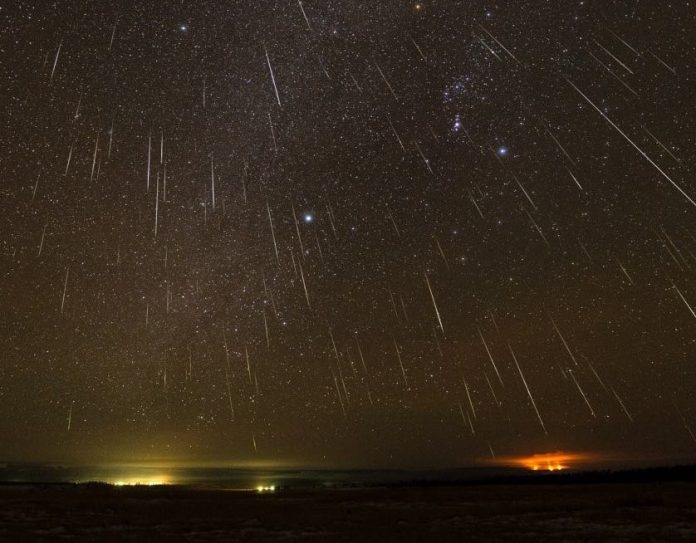GEMINIDS, known as the “king of the meteor showers’ take place next week, giving stargazers an exciting opportunity to see the year’s final shooting star show.
The Geminid meteor shower usually provides the strongest display of meteors each year. Near midnight from a clear, dark location, one can often count in excess of 60 Geminid meteors per hours emanating from near the bright star Castor, in the constellation of Gemini the twins. This year however, there will be a nearly full moon in the sky as the Geminids peak on the night of December 13/14. Unfortunately this means that the fainter meteors will be obscured by the bright moonlight and that total counts will be reduced drastically. Then is this display worth viewing this year? Most certainly! Instead of seeing 60 or more Geminids per hour one may still be able to count roughly 20 per hour. Is 20 per hour worth viewing on a cold December night? If you look at the overall activity throughout the year, only 10-20 nights per year can match this total. And since the most of the meteors you will see under such conditions will be bright, they will be more colorful and impressive than usual.
Geminid meteors are visible during the first three weeks of December. They are most active on the mornings of December 12-15, with the peak occurring on the 14th. The bright star Castor rises near 1800 (6pm) local standard time for most locations in the middle latitudes of the northern hemisphere. At this time Geminid meteors can only skim the upper atmosphere from your location. Therefore you will see long Geminid meteors coming from the northeastern horizon. Most of these meteors will appear low in the northern and southern sky. If you are lucky though, some will shoot overhead and streak nearly the entire length of the sky. As the radiant near Castor rises higher into the sky, the Geminid meteors will be able to penetrate deeper into the atmosphere. Therefore they will appear shorter and their duration will also be less. Geminid activity will increase until it culminates on the meridian. This occurs between 0100 and 0200 local time. At this time the radiant lies highest in the sky and Geminid activity will be at its strongest. As the radiant begins to set in the west, rates will decrease until the bright sky at dawn obscures all the activity.
So what’s the best strategy for viewing the Geminids this year? I would suggest viewing as soon as it becomes dark on the night of December 13th. This is your best chance to see these long “earthgrazing” Geminids. Watch until moonlights begins to interfere. Then take a break until the radiant has risen higher into the sky. Start sometime between 10:00pm and 01:00am local time. Watch for at least an hour as activity will vary. There are peaks and valleys of activity and watching for at least an hour will ensure that you see at least one peak, if not several. Meteors often burst forth producing many within a few minutes. On the other hand, several minutes may pass without seeing any activity at all. This is common to all meteor showers as they rarely behave themselves and produce a steady stream of activity.
If it happens to be cloudy on the night of December 13/14, activity will still be good on the 14/15. After that though rates will have fallen by at least 75 percent and meteors will become scarce in the bright moonlight. If it is clear prior to maximum, by all means give it a try. Activity on the nights of December 12th and 13th are also very good so don’t waste those nights if it appears that the morning of the 14th will be cloudy.















